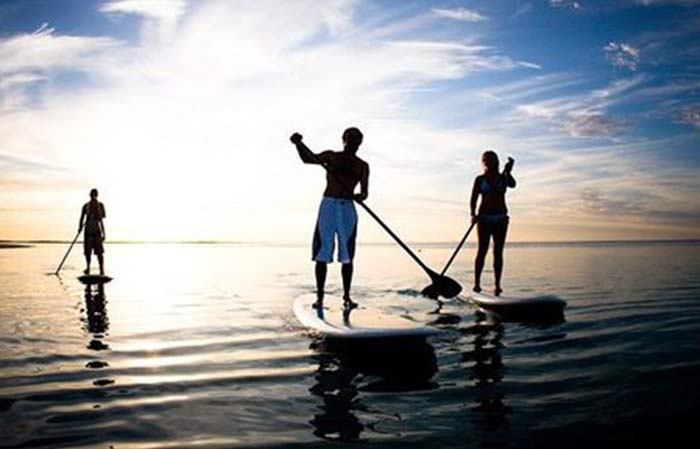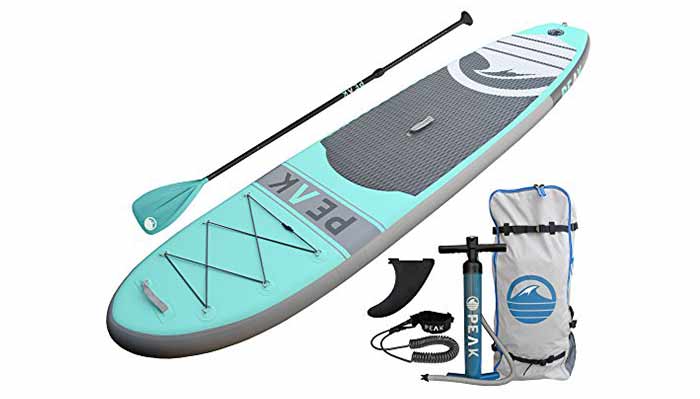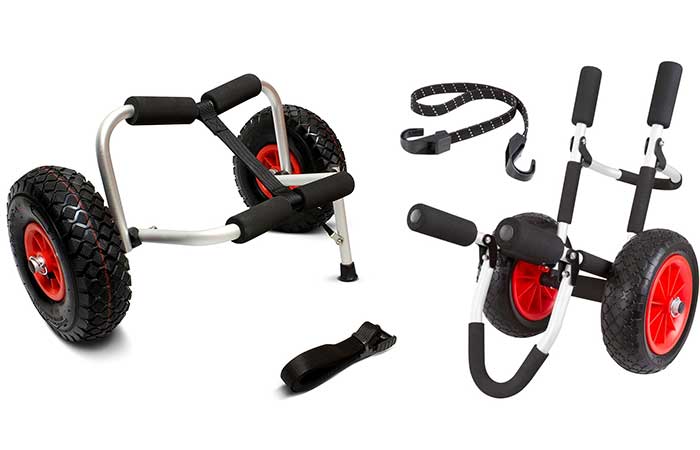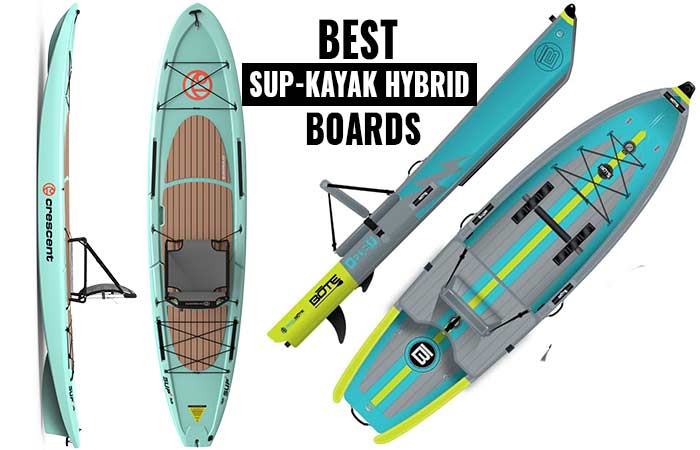Best Paddle Board Workouts/Exercises to Improve Your Fitness
Paddleboarding exercises are very common nowadays, especially done while in water, and even on the land, they offer great health benefits since you are equally exercising every ounce of your body; from your core to your back, arms, and shoulders.
Inhere discover some of the best workouts that you can do on standup paddleboards. This could be a quick warm-up, stretching, core exercises, a yoga meditation session, or it could be a regular workout routine; either way, here are the best SUP workouts.
Types of SUP Exercises
Before we begin, you should be aware that there are different types of SUP exercises. The differences emanate from the specific parts of your body that the exercises target. Some exercises are light while others are intense. Below are some ideas to take into consideration before starting the workouts.
- It’s best to incorporate a warm-up session before starting off the SUP workouts. This will get your blood pumping.
- SUP workouts mainly focus on building balance and stability, therefore, endeavor to do an all-rounded workout routine with the exercises below.
- Make sure you’re using the right SUP which offers a wide surface area for your exercise. Otherwise, you will feel constricted.
- Always anchor your board using a leash to maintain a stable workout environment. Especially if the water conditions seem wavy or there’s much traffic moving up and down.
Now that that’s out of the ways let’s get to the exercises. You will read about;
- Balance and stability exercises
- Stretching and Cardio exercises
It is important to note that there isn’t a specific area for the SUP workouts… you can choose to do your workouts off or on board.
Off-Board Workouts
These are more like warm-up exercises done before you board the paddleboard. They include six common workouts such as the tandem balance, single-arm pulls, planks, dorsiflexion, arm, and leg reaches and squats. They are perfect for getting the blood circulating readily for other exercises.
The warm-ups are used to strengthen the core, add a touch of balance, and opens the mind.
On-Board Workouts
These offer the most resistance as you will be fighting the motion from the waves as well as hitting rocks and other obstacles. However, they are a better option for burning calories and training.
Balancing and Stability Exercises
Stability and balancing come from core and lower body. Following are exercises that engage muscles in these two areas.
Core Exercises
Paddleboarding is a sport that uses the core muscles to easily navigate the water plus other activities. That being said, these are the most prevalent workouts used to build your core strength.
The Plank
There are variations to the plank; from side plank, normal plank, plank, and crunch, among others.

This is one of the best exercises as it’s not only easy to do, but it also easily builds up the core, without straining the lumbar area of your spine. What’s more, they have a stabilizing effect which is crucial for paddling.
To do the planks;
- Lie flat on the board. Ensure the sup is stable on the water before you begin.
- Fold your arms so that your elbows now support the upper part of your body.
- Raise your legs as well so that your toes are supporting your lower body.
- You should be parallel to the ground. Maintain the position for a few seconds to over a minute depending on your resistance.
The good thing about planks is that even though it mainly targets the core muscles, it can also work on your hip’s gluteus muscles and quads. Side planks such as the raised leg plank and swiss ball planks also tend to work on the sides of your body. Maintain constant rotations as you ensure the exercises over a couple of weeks. You will have build on your muscles in no time
Abs Crunches
Another crucial core workout is crunches. Whether you choose to do the knee hangs, bench crunches or raise ups, they target the same core muscles.
To start off;
- Hold your paddle overhead as you widen your feet.
- Ensure the width is bigger than your shoulder level.
- Lift one knee and hip and maintain that position for as long as you can.
This specific task will target your oblique muscles regardless of the design of the crunch. If you’ll be doing some warm-ups before getting started with paddling, then the bench crunches are best. Simply lie flat on the bench, put your feet and knees together, and lift them simultaneously. Repeat several times.
Pilates
Unlike the calm and relaxed yoga poses, pilates significantly tightens and strengthens your core through various activities such as the hundred. It’s the most common pilates workouts.
All you need to do is;
- Lie flat on your board with your back.
- Bend your knees and raise them above your hips.
- Lengthen your legs up to half a right angle.
It’s also a great exercise for your breathing and improving your blood circulation.
Another pilates exercise you can do is ankle taps.
- Again lying flat on your back, extend your legs and arms.
- Curl forward and bend your knees to a 45-degree angle.
- Now reach your ankles by curling left and right and tapping every side.
- Repeat for 30 seconds.
There are many more exercises you can do to strengthen your core like the sup teasers. They will work on your oblique muscles as they also aid with the navigation of your spinal cord.
The Boat Pose
This is a classic SUP exercise that features numerous variations for a beginner all the way to advanced. To do the boat pose;
- Sit on your board with your knees bent and your shins parallel to the ground.
- Maintain that posture until you start to feel the burn.
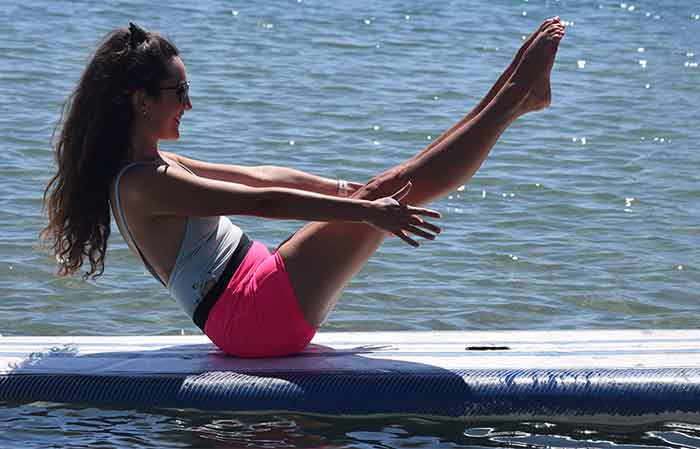
You can make the workout more intense by straightening out your shins or including a paddle placed perpendicular to your legs and arms. You can also choose to move during the pose to add tension or pulse it up.
This pose is great for endurance training as well as balancing as it targets the psoas muscles. These deep core muscles will evenly work on your hip flexors, which are responsible for balancing and improving on posture for stability.
Lower Body exercises
Squats are best known to work on the gluteal muscles as well as the hamstring. With different variations, you can work on even more muscles in the body. To start off with the first variation of the squat is a chair pose.
Chair Pose
Instead of doing the usual up and down squat movements, try holding the squat position for as long as you can hold. Here’s how to do it.
- Widen your feet distance to approximately the same width as your shoulders.
- Lower your body as if you’re planning to sit. Ensure you remain as straight as possible.
- Keep your spine as neutral as you can and avoid arching.
- Balance your weight for as long as you can.
Since this is also a common exercise, there are various things you can do to toughen the workout. For example, hold your paddle over your head or slightly above your shoulders while maintaining a straight back.
You could also change the width of your legs – how far apart they are. Lastly, you can resume your usual squatting of moving up and down but with less space between your feet.
Stretches and Cardio
Chest stretches are meant to exercise the upper body, from your bicep muscles to your tricep muscles, your shoulders, and the chest at large. Some you are required to be as inclusive of every body part, these exercises are a good way to stretch out those areas.
Last but not least, exercise is not complete without burning some calories. This includes the vigorous paddling, burpees, intense squatting, among others. Cardio doesn’t have specific exercises you should get into, it’s all about the technique. Here’s how;
- Squats are done faster or alongside burpees where you jump up and down, lie flat on your tummy and get back up. Repeat.
- There need to be fast intervals of training and a small portion of rest to regulate your heart rate. For example 10 reps of an exercise and 30 seconds of rest in between.
- If you’re in the midst of waves or rocking motion, maintain the sequence to keep your mind calm. Moreover, it will challenge your cores to keep up with the constant movement, therefore, offering more balance and stability as you work out.
The main idea behind cardio is to get the heart pumping. That’s why you will see many engaging in burpees, kick paddling, and even board pull-ups.
If you’re thinking of training using the SUPs, cardio workouts are the most recommended because they allow you to balance between stability and speed. This will help in learning stopping, exit drills, stance transition, acceleration, and stop and go techniques.
What Muscles does Paddleboarding Tone?
With the right stroking technique, paddling mostly tones the core, back, arm, and shoulder muscles. However, SUP is generally a full-body workout, which means more other muscles are involved.
Following is an illustration of the muscles that are activated when you paddle.
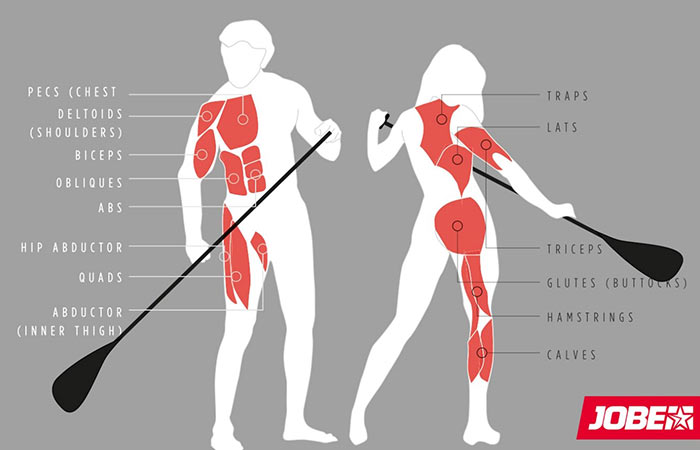
Paddle Boarding Before and After
With consistency, patience and the right technique, paddleboarding can transform your body. Even celebrities agree that it is an awesome workout. Here are before and after pictures from around the internet.


Further SUP Ideas & How-tos
The following is a collection of more Stand up paddleboarding articles and board guides
Paddleboarding
- What to Wear for Stand Up Paddleboarding?
- How to Paddle Board-Is it Hard? SUP Beginner Techniques & Tricks
- SUP Paddleboarding Tips & Tricks Every Paddleboarder should know
- How to Get on a Paddle Board, After Falling & from a Dock
- How many Calories does Paddleboarding Burn?
- Benefits of Paddleboarding(SUP)
SUP Equipment & Accessories
- Best Large SUPs for Bigs Guys & Multi-person(2-6)
- Best Bamboo Paddle Boards
- Best SUP-Kayak Hybrid Boards
- Best Fishing SUPs
- Best Pumps for Inflatable Stand Up Paddleboards(ISUPS)
- What Size Paddle Board Do I Need?
- Types of Stand Up Paddleboards
- Inflatable vs Solid/Rigid Paddleboards
- How Long Do Inflatable Paddle Boards Last?
- How to Store SUPs-Storage Ideas & DIY Option
- Best Paddle Board Roof Racks for Cars, SUVs & Trucks

